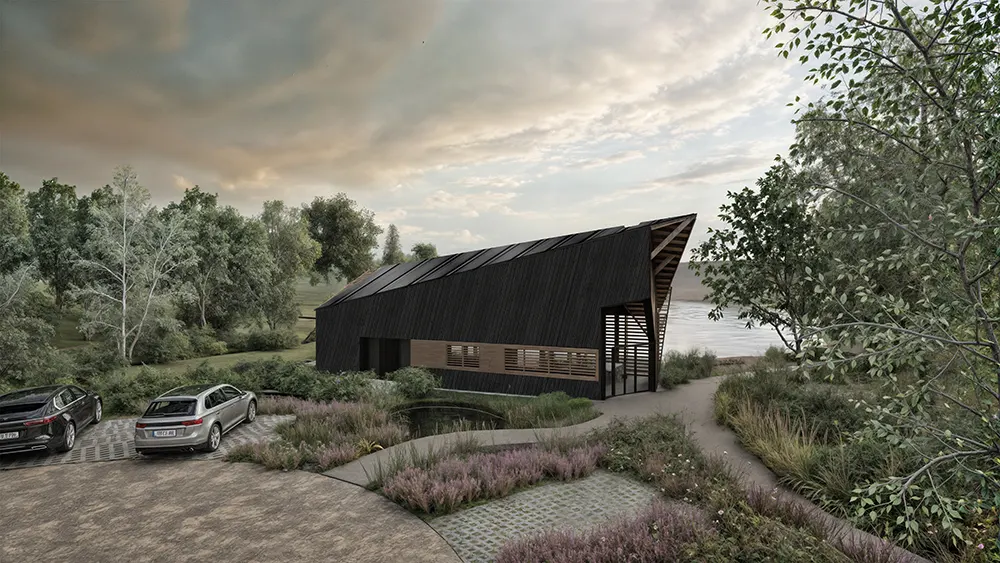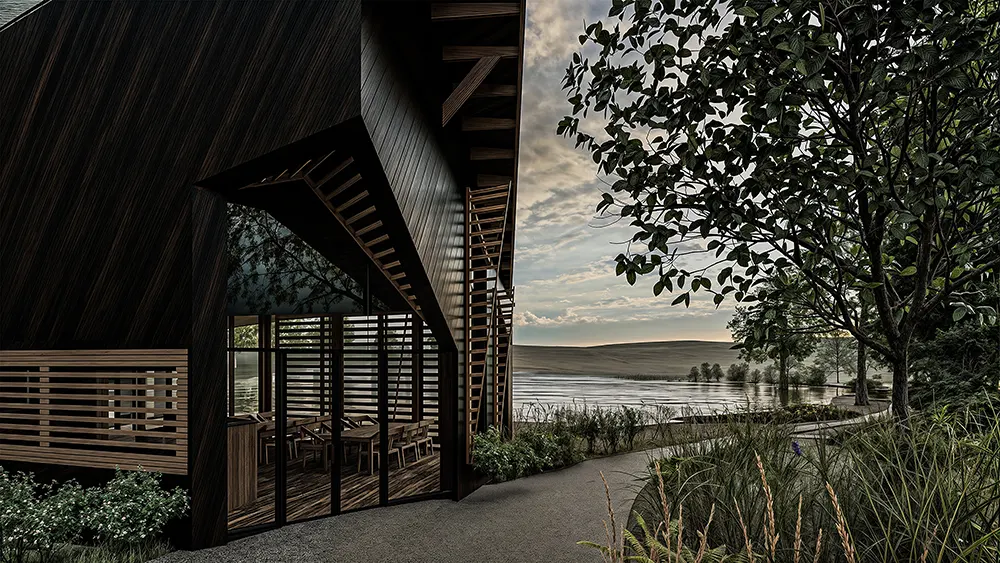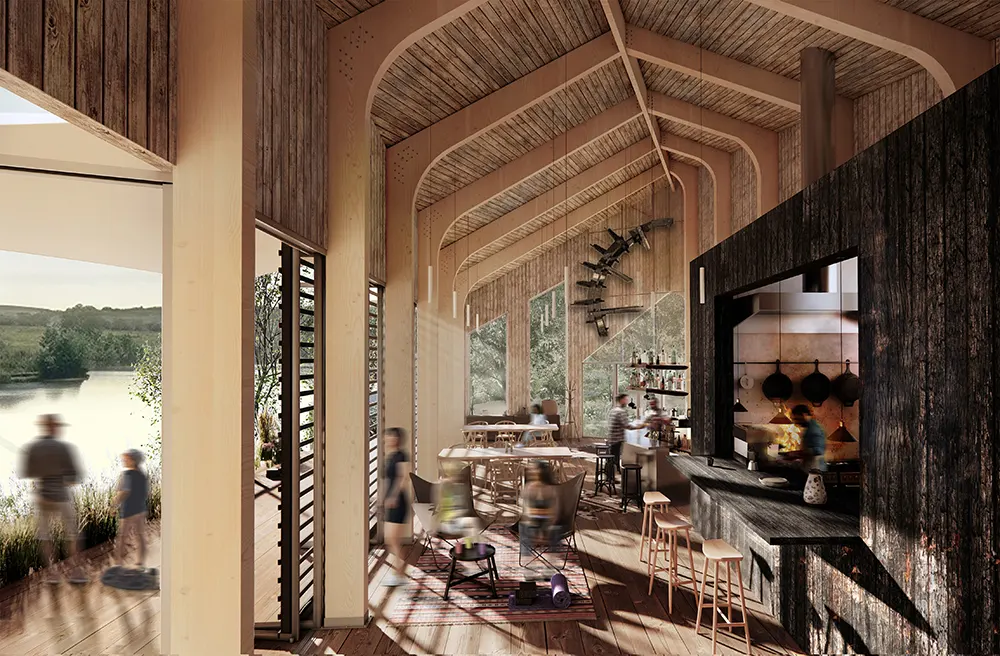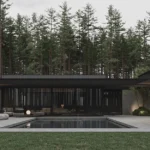
Atelier Architecture & Design leads the transformation of Pilsworth Lake, a site on the edge of the Pennine moorland in South Lancashire, shaped by glacial meltwater at the end of the last ice age. While that prehistoric past might seem distant from the Industrial Revolution, the two eras intersect here. Valleys carved by retreating ice left soft water brooks that later powered the early cotton mills, including the Pilsworth Clough Mill, located ten miles north of Manchester.
In the early 19th century, workers dug the main lake to support the mill’s water needs. As machinery replaced rural life with industry, this part of Lancashire entered a new era. That era eventually faded. The pit filled in, and the site began to change again. Nature crept back in. Trees took root. A quiet stream now runs through the area, and while the surrounding edges hold modern industrial units, the central space has regained some of its rural calm.

Reimagining a Forgotten Space
The new proposal looks to support this natural recovery while making the area more accessible and useful to the public. The project strengthens the ecological foundation of the lake and reintroduces it as a civic asset. Angling remains a key part of the local culture and will continue. In addition, designers plan to bring in new uses such as walking paths, nature watching areas, and picnic spots.
A series of structures will organize the site into a connected experience. Raised walkways, viewing balconies, nature hides, and even open-air classrooms and theatres will create opportunities for residents and visitors to engage directly with their surroundings.


Prioritizing Ecology and Design
Rain gardens across the site manage water runoff while increasing habitat diversity. They serve practical functions and help soften the presence of new additions. Planting strategies support the return of native species and aim to boost site biodiversity by more than ten percent.
The design also minimizes environmental impact through low-carbon materials used for new structures. These include a café, visitor center, shop, and boathouse, all supporting both recreational and ecological goals. This careful material choice ties function to environmental responsibility without overbuilding.


History Informs the Future
The project draws from the area’s industrial and natural past without replicating it. Instead, it aims to tell the story of how this site supported early manufacturing and how it now supports something different, community interaction and ecological restoration.
Discover More Impressive Landscape Projects
By giving space to memory and change, the proposal brings attention to how human use shapes land and how that land can respond over time. This connection deepens when visitors learn about the mill that once operated here and how glacial forces from millennia earlier made that industrial moment possible.

Community, Access, and Regeneration
The proposal gives Greater Manchester residents a renewed space that balances ecological integrity with open public use. Every design element, from trails to buildings, contributes to accessibility and long-term sustainability. People will gather, walk, learn, and observe in a place once cut off by industry.




